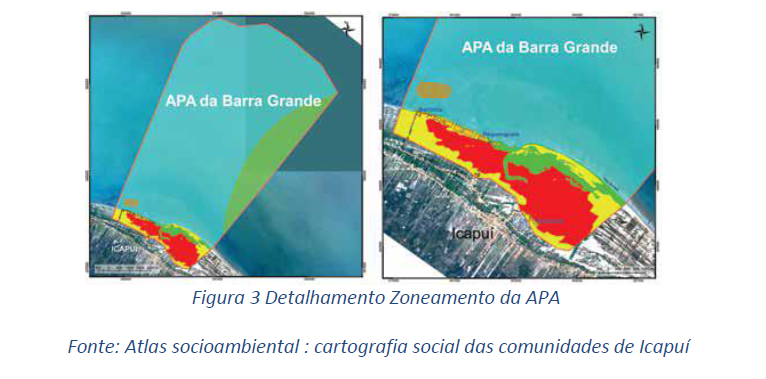The NGO AQUASIS, born in the Federal University of Ceará, has made a great contribution in terms of its research to prevent the extinction of animals, achieving actions of rescue and rehabilitation of marine species, has also provided information to improve the algae bank which is, in turn, food for birds.
There was a great alliance between the Prefecture of Icapuí and the municipal bodies and NGO's in order to avoid signing agreements with oil extracting companies that damage the environment, AQUASIS has also made very productive alliances with the Cooperative of local carciniculturists, for the benefit of the birds that feed on the shrimp in the area, the Mulheres de Corpo e Alga Organization has also been part of this alliance, obtaining very productive results, the Fundação Brasil Cidadão (Brazil Citizen Foundation) has also made very productive alliances with the Cooperative of local carciniculturists, for the benefit of the birds that feed on the shrimps in the area, the Mulheres de Corpo e Alga Organization has also been part of this alliance, obtaining very productive results.The Brasil Ciudadano Foundation, in terms of culture, education and technology, the Community Association of Shrimp Breeders, contributing to the social and economic strengthening sustainable with the environment, the Secretary of Education, with its interdisciplinary work, the NGO ARATU, which carries out tasks of environmental education and is strongly linked to the Prefecture, this NGO also plays a very important role in the field of community tourism.
The high degree of commitment of the organizations, the community and other entities has led to solid alliances that have been maintained over time, thus facilitating the progress of the project and obtaining the current benefits.
It has been learned that partnerships ensure a strong degree of involvement of all stakeholders and this is directly related to the effectiveness and achievement of objectives for the protection, preservation and conservation of environmental systems and their habitat.
